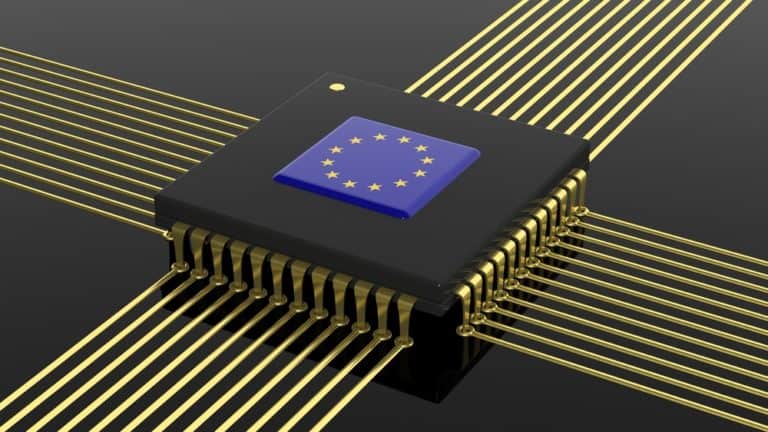A series of tech companies have decided to place part of their chip production within the European Union. While Europe has long housed mostly mature manufacturing processes, it is trying to lure tech giants while the bloc is in competition with the U.S. and Asia. The European Chips Act boasts a €43 billion package, consisting of public and private investments. What will come of it, and where will European chip production end up?
Intel: plans in Germany, Poland and maybe Italy too
For a long time, Intel has been wrangling with the German government over the construction of a new chip factory in Magdeburg. A total of 40 billion euros will be involved for the facility, of which Germany will provide 10 billion. At first, that subsidy amount was 6.8 billion euros, but according to Intel that was not nearly enough. It is also a more expensive project for Intel itself than previously thought: 30 billion instead of 17.
Read more: Intel and Germany reach agreement on billion-dollar subsidy
In addition to Germany, there are also plans for a Polish complex in Wrocław. This should accommodate thousands of new jobs, including 2,000 within the facility itself. Construction should be completed by 2027.
Just last year we reported on an impending agreement with Italy to set up a €4.9 billion chip factory. However, it has been a very long wait, although Intel stated earlier this year that the Italian plans are not off the table. As is often the case, reality still appears to be bound by long leadtimes before plans actually come to fruition. Perhaps the eventual introduction of the European Chips Act could give that the push to get the deal over the line.
By the way, Intel is not only continuing to expand within our continent. There will also be a new chip factory in Israel.
GlobalFoundries, STMicroeletronics: French government support
In late April, STMicroelectronics and GlobalFoundries appeared to have been given the green light to build a new chip factory with government support. The European Commission is talking about a support package of 7.4 billion euros. By 2027, the project should be complete. Unlike Intel, where the focus of chip production is on x86 computers (both for businesses and consumers), this seems more likely to be about chips “for electric vehicles, charging stations and other applications that play an important role in Europe’s green transition,” says Margarethe Vestager of the European Commission.
Read more: EC authorizes STMicroelectronic and GlobalFoundries chip factory
Infineon: 5 billion for German plant
Germany’s Infineon received confirmation in February that it may start work on a chip factory in Dresden that will cost about 5 billion euros and should be finished by 2026. It should create 1,000 jobs.
Reuters reported that the deal drew positive reactions from German politicians, who, like other European policymakers, had been wary of the impact of the U.S. Inflation Reduction Act. This US deal can be seen as the imposing counterpart to European plans.
TSMC: beyond its own borders
Those familiar with chip manufacturing know the name TSMC (Taiwan Semiconductor Manufacturing Company). The chip giant was in the news during the 2020-21 shortages because it had far too little capacity for the most advanced processes on which modern chips are being created. TSMC currently already has a presence in Asia and North America, but may eventually add Europe.
As with Infineon, rumours circulated in 2021 that a facility would end up in Dresden. Some more substance came to that in late 2022 courtesy of the Financial Times. If the plan goes through, construction could begin as early as 2024. Sources at the time reported that government support would also be needed here. Thus, the picture is increasingly crystallizing that state influence may be the deciding factor in these choices.
AMD: R&D in Ireland
AMD is also not to be missed when it comes to European projects. Although it has not been baking its own chips since selling GlobalFoundries in 2009, it does have plans to start working on chips in Europe. The investment in question is $135 million (€123 million) for various R&D projects in Ireland.
The plan is to create 290 new positions over a four-year period for “strategically important R&D projects.” Xilinx, acquired by AMD in 2022, already partnered with IDA Ireland on several occasions to innovate chips on the island.
In short: progress, but work to be done
In a vacuum, this overview seems like only good news for European chip production plans. It is also certainly the case that Europe seems to be playing catch-up seriously. Still, some big names are missing. Major players such as Micron and Samsung do not as yet have large factories planned in Europe. This is while these parties are working on locations based in the US. Another development that gives the above plans more context is that Intel, TSMC and GlobalFoundries also have highly lucrative plans in store for America. At least the staggering $100 billion (91 billion euros) for a chip factory in Ohio prevents us from somewhat overvaluing Intel’s ambitions in our area.
That’s not even taking Asia into account, where large investments are also taking place.
In other words, the plans are on the table, the intentions are there, but now the competition has only begun for Europe while Asia and the US have been competing for some time. Catching up will in all likelihood require even more than the European Chips Act anno 2023.
Also read: European Chips Act gets green light, but is it too late?
